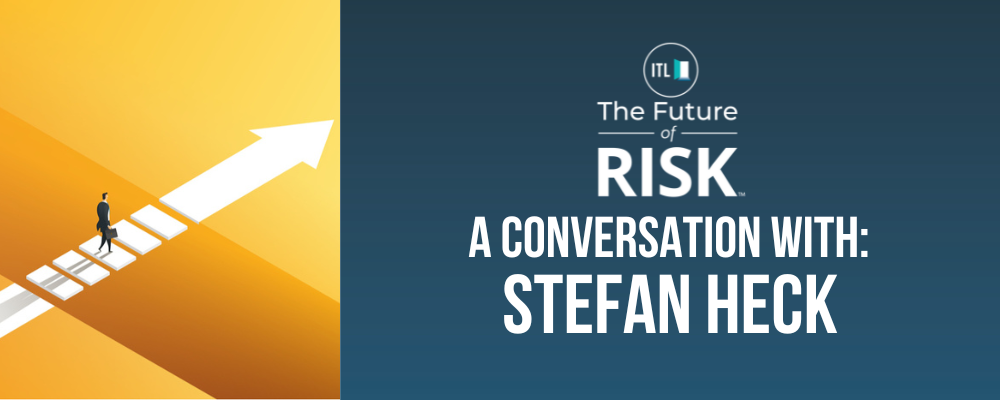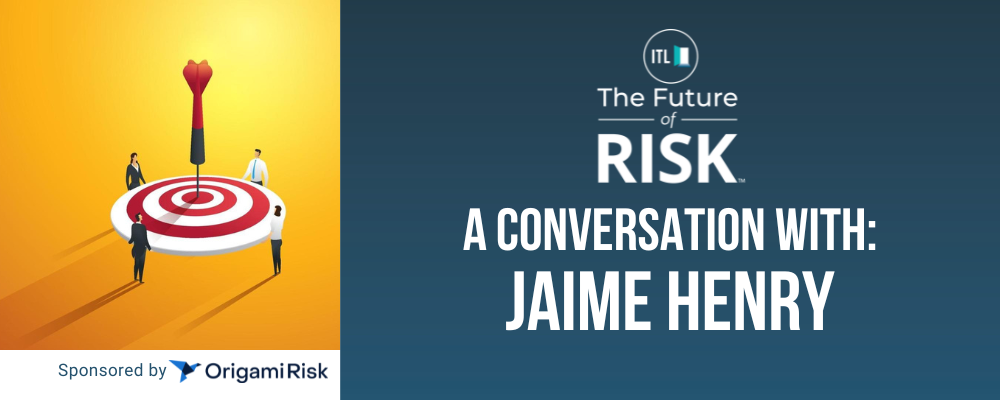 |
Dr. Heck is the CEO and Co-Founder of Nauto, a Palo Alto-based technology firm focusing on smart cars. A former Stanford faculty member, he advises long-term investors on opportunities for transformational change, including AI-integrated designs for new investment vehicles and modification of existing ones. He is based in Palo Alto, California, US. |
Insurance Thought Leadership:
At The Institutes, of which ITL is an affiliate, the idea of “Predict & Prevent” has become a major theme. Why just use all the data that insurers have to price risk, then indemnify people after they have a loss? Why not prevent losses in the first place?
You’ve been working toward that goal for years now. Maybe start us off with a quick summary of what you’ve achieved so far?
Stefan Heck:
We set out to beat the seatbelt, which was the previous high water mark for injury prevention and reduces losses by 20%. At Nauto, we now routinely achieve loss reduction percentages of 60%. We've taken some fleets from multiple fatalities per year to essentially zero, which I wouldn't have thought possible a couple years ago.
And the improvement is really fast. We see a huge reduction in risk behavior in just a week or two. Losses continue to decline for several months, then stay consistently low for many years.
Insurance Thought Leadership:
How much of the behavior change comes just because I know somebody is watching me?
Heck:
Not much, and it’s temporary: The “watching you” factor -- also called the Hawthorne effect -- produces 10% improvement for a week or two. Then it goes away. We've measured that.
The single biggest piece of lasting behavior change occurs through in-vehicle voice feedback that makes the driver aware of risks they did not perceive and prescribes the right action. If you're tailgating, the voice will say to leave more following distance. If you're using your phone, it will say to pull over to use your phone. It is an escalating set of interventions, starting with gentle behavioral nudges and real-time voice coaching and ending in alarms for the most dangerous situations. We find that, after about a week, you don't get into the higher-severity levels anymore. You get the first nudge, and you immediately know what to do. Over a couple of weeks, nearly all the risky behavior goes away. In a few fleets, we’ve even see ALL risks disappear. Historically, no insurance company thought that was possible.
We’ve tried other approaches, but voice works best.
You have to be very precise. If you tell the driver to leave more following distance and there's nobody in front of them, they're not going to listen the next time the voice says something. We don’t launch risk detection AI algorithms until they are wrong less than one time in 20, and the more mature risk detectors are down to one false alert in many hundreds. That’s when the drivers trust the systems and are grateful for the heads up on risks they missed -- we see smiles, people thanking the device or even waving to it like you’d express gratitude to a passerby who warned you of a danger.
We actually don’t alert the driver every time we see a risk. We make a judgment of how critical the risk is and only intervene when it’s dangerous.
For example, if you're stopped at a red light, we don't alert you if you’re using your phone. It's still illegal in many states, and you can get a ticket for it, but it's not that risky. It's not zero risk. You slightly increase your risk of getting rear-ended because the guy behind you may see the light turn green while you don’t.
If you’re speeding, well, everybody speeds a little, and it’s not that risky if you’re on an open road and in the flow of traffic, but if you're speeding and tailgating and then look down at your phone, now you're 45 times as likely to have an accident.
In addition to the risk coaching, we also build in real-time collision warning. You get forward collision warnings for vehicles, pedestrians, bicycles. You’re warned if you’re getting drowsy or falling asleep – those tend to be alarms because you don't have much reaction time. They eliminate about 20% to 25% of collisions.
The third piece is that, after a couple of months, 85% to 90% of your drivers will have improved, so your bottom 5% of drivers will be about 50% of your remaining risk. A portion of those drivers turn out to have medical problems. You’ll find they need glasses or have night blindness or sleep apnea or whatever. The fleet safety team then figures out how to help them or reassign them to a different route or schedule to avoid drowsiness.
Insurance Thought Leadership:
How broad a range of vehicles are you in by now?
Heck:
We’re in every kind of vehicle and every size you can imagine as long as it has four wheels and drives on roads. We don't do forklifts in warehouses. We don't do farming or mining equipment. But we do everything from sub-subcompact cars in Japan all the way up to Class 8 trucks.
About 80% of it is what's called light commercial -- so pickup trucks, vans, package delivery trucks.
We now protect a lot of very large fleets. Our largest fleet has over 30,000 vehicles and is still growing with us a lot. We also work closely with middle-market fleets, which for us is 500 to 1,500 vehicles per fleet.
We entered Japan in late 2018, early 2019, and it’s about 20% of our business. We have a smaller presence in Europe, mostly the U.K. We’re about to launch in Canada with multiple fleets and expanding in Europe, as well.
Insurance Thought Leadership:
I’ve seen reports of pushback from drivers who resent being monitored. How do you deal with that issue?
Heck:
Well, that’s mostly backlash to older camera and video recording solutions out there. At Nauto, the entire system can work with real-time warnings and coaching only, with ZERO video recording or uploading. Even for a typical deployment, where event recording is enabled, we’re only uploading 0.4%
of the driving time, so nearly all your time in the vehicle is not recorded, not monitored. I tell drivers, if you're picking your nose, nobody will ever know unless picking your nose causes you to crash. Then, it'll show up in those 10 seconds around the collision moment. We never sell personal data. The only data we share outside each fleet are things like updates to maps -- e.g. there is a new stop sign here -- or abstract anonymous risk insights like which maneuvers or locations are dangerous.
The other big concern among drivers is about tracking the number of hours they can drive, which limits their ability to make money. Unfortunately, that issue is not simple for us to fix because it’s based on federal regulation for heavy duty trucks and interstate transportation. I can tell you, based on our data, the rules are too simplistic. The rules are a sledgehammer approach, a one-size-fits-all. They basically say that, after eight hours, you have to take a break, but we see drivers who get drowsy after two hours and we see drivers who drive for 12 hours and never have a problem. With some fleets that aren’t under federal regulations, we see drivers who go for 16 hours a day and are truly fine.
From a performance point of view, you’d want a system that says, “Hey, driver, you're drowsy, take a break,” but lets the driver go 10, 12 hours if they never become drowsy. I hope some Department of Transportation regulators are reading this and making a note.
Drivers also don’t want to be recorded during breaks or while they are sleeping in their truck cab. So, five minutes after you park, our device goes to sleep. What you do in the back when you sleep or read a book or whatever is never going to be captured.
We actually don’t have to record at all. We’re just providing a safety device that provides real-time alerts. Whether it records is entirely optional for the client.
Even drivers tend to want to record collisions because, after a couple of months, the fleet is so good that 80% of the remaining collisions are other people’s fault, and fleets want the video so they can exonerate the drivers. Fleets also benefit from knowing right away when their driver is at fault. If they wait until they’re served with a lawsuit three weeks later, they pay 22 times as much as if they realize right away that they’re at fault and call an ambulance and get out their checkbook.
Insurance Thought Leadership:
How far along are you in incorporating outside data, such as about where accidents tend to happen?
Heck:
We have the historical events. We know how risky a location is both from our own data and from third-party data.
Insurance Thought Leadership:
How quickly can you incorporate information about current road conditions? Can you let me know that a vehicle in one of your fleets just skidded on black ice a quarter-mile ahead of me?
Heck:
We don’t have any way to detect black ice today because there’s no way to see it. But, in time, we’ll get more integrated into vehicles, and the traction-control system could tell us a vehicle just crossed some ice, and we could alert everybody else.
We certainly don't cover all risks yet. We've driven 3 billion miles, and we provide real-time preventative alerts for about 60% of the risks we’ve seen, and we’ll push that north of 90%.
We have 80-year-olds driving trucks in Japan, because of the aging population. If they have a heart attack, we'll detect that their eyes are shut and they’re slumped over, but it's a little late, right, so we want to keep extending how early we can detect risks to intervene before they turn critical.
Yet we really can deliver these 60%, 70%, 80% safety improvements.
Insurance Thought Leadership:
I have a feeling you get some pushback from insurers and fleet managers when you make that claim.
Heck:
I’ve actually stopped telling insurance companies that I have a technology that within two weeks can make their drivers 80% better. The executives look at me like I've just said I have a voodoo doll.
I had a conversation with a chief underwriting officer who said, “We love new technology.” I said, “Great. If we do a deployment together, how much data do you need before you can build Nauto into your product?” He said, “Oh, at least 10 years of data.” I said, “You don't really like new technology if you’re only buying 10-year-old stuff.”
Every insurer wants to prove the technology in their own fleets. But we’re in 800 fleets already, all over the country, dirt roads to interstates and crowded cities. Hundreds of thousands of vehicles. This stuff works.
The mindset is the real barrier. People fundamentally don't believe you can take any guy off the street and make him two-thirds better by next week. And we can.
Insurance Thought Leadership:
I’ve always pushed back some on the economics of Predict & Prevent. Yes, you can save a lot of money by detecting water leaks before they cause damage, but you have to install an awful lot of sensors and automatic shutoff valves. Do your savings outweigh the expenses?
Heck:
The payback is about four months because vehicle collisions are unfortunately a lot more common than water leaks. A typical fleet will have between $3,000 and $7,000 of risk per vehicle per year if you include third-party liability on vehicle damage, workers’ comp and medical payments and injuries. For a large fleets with thousands of vehicles, they will often have multiple collisions a day before deploying Nauto. We don't even factor in loss of use of the vehicle, missed deliveries, all that stuff, but we still provide an average of $3,000 gross savings per vehicle per year. Our hardware installed is $500, and service costs about $500 per year. So you earn your $1,000 back in four months, and you don’t have to pay for the hardware in subsequent years.
The payback is so quick that once they see it, customers want it for the kids or spouse, too. We don’t sell to consumers (yet!), but Nauto employees can get a Nauto systems as a perk for their family.
Insurance Thought Leadership:
What comes next?
Heck:
We’ll add more sensors. Better and more camera sensors, reading more data from the vehicle itself. As I said, we cover 60% of the risks; we want to get the other 40%, or at least just about all of that. The last 3% or 4% gets really hard.
The next frontier is where you're actually going with your black ice example. At the moment, we have about a two-week retraining cycle. We pull the risk data from our vehicles into the cloud, we rerun the models and we deploy the models back out to vehicles while parked. What you really want is to be near-instantaneous. There’s no reason why a second car should ever have to run into the same danger if one car has already seen it.
Ultimately, my goal is to make this free. This should be built into your car, built into your insurance. There's no reason for this to be an extra thing that you're buying. And, of course, we want to make it available to teens and elderly drivers, not just fleets.
Insurance Thought Leadership:
When your daughter learned to drive, did you use your device to keep her safe?
Heck:
Absolutely. She hasn’t had ANY accidents, which is rare -- unassisted teens typically have 2.5 collisions before mastering driving.
In addition to the production version, I sometimes have the latest beta release in my car as part of our dog food program. [A truism in Silicon Valley is that you have to eat your own dog food by using your own technology.] Sometimes, the new risk detectors don’t work perfectly yet while in beta. One time, we released a feature for smoking detection. It turns out that smoking isn’t just a health risk. It elevates collision risk by 50% because it can distract you. Well, the smoking detector went off in my car. What? It turned out that the straw in my daughter’s boba drink looked enough like a cigarette that we got a false alarm. We had a great laugh about that. Boba detector!
She actually started learning from the device well before she ever learned to drive, because she heard what it was saying. She’s been beta testing with me since she was little. She tells me, “Dad, you have to do what your device says.”
Insurance Thought Leadership:
Don’t you hate it when kids are right?
Thanks, Stefan. It was great to catch up.








